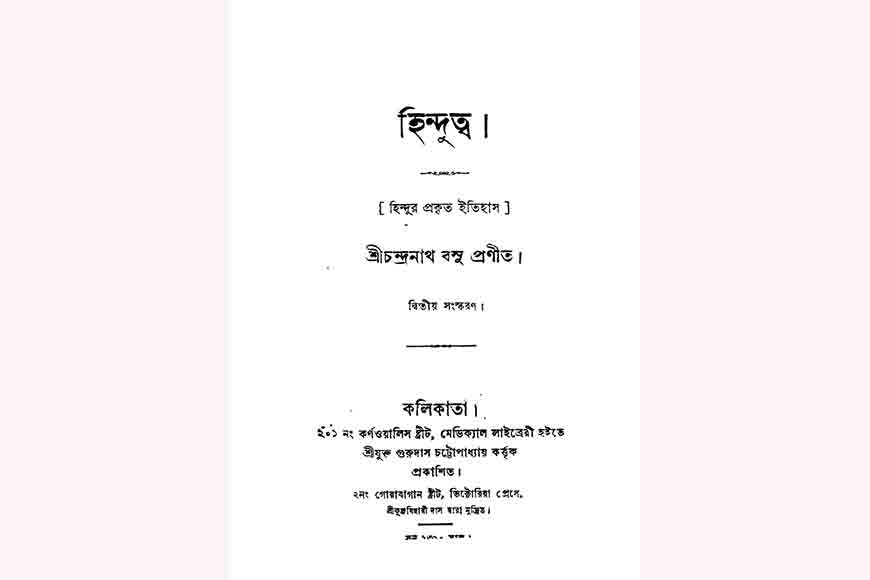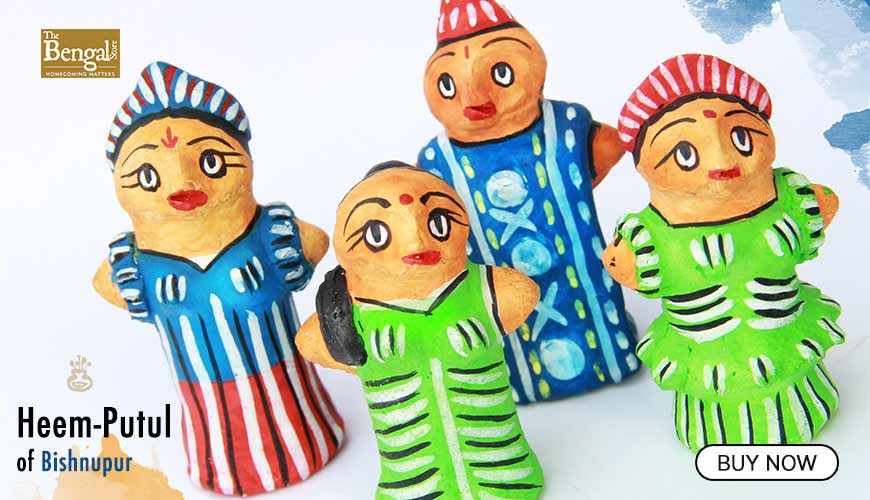‘Hindutva’ was propagated in Bengal in 19th century as a replica of Bharat Mata
.jpg)
According to Merriam-Webster’s Encyclopedia of World Religions, Hindutva is a concept of ‘Indian cultural, national, and religious identity.’ The term ‘conflates a geographically based religious, cultural, and national identity: ‘A true Indian is one who partakes of this Hindu-ness.’
Although India’s Constitution proclaims secularism, the country has long been plagued by sectarian violence between its Hindu majority and Muslim minorities. Scholars have examined and pointed out how the 1940’s Nationalist Movement and the 1947-Partition of the subcontinent laid the foundation for communal tensions, but the long-standing conception of India as a fundamentally Hindu nation has received less attention. But in order to trace the longer history behind the animating tenet of contemporary Hindutva ideology, one needs to take a peek at colonial Bengal at the turn of 19th century to find out how Bengali novels played a central role in perpetuating , and at times, contesting this Hindu cultural imagining by strategically exploiting elements of indigenous oral and literary traditions.
In 19th century, Bengal was the harbinger of Renaissance from where many aspects of modern India originated including the concept of Hindutva. The very word Hindutva, the concept of Bharat Mata and the Bande Mataram slogan were all products of Bengal that spread across the country. The origin of the notion that Hindus are in danger – the principal reason that led to the creation of right-wing Hindutva organizations – can also be traced back to Bengal.
Hindu revivalism emerged in Bengal in the second half of the 19th century as a reaction to the influence of Western education and culture on the Hindu society during the first half of that century. The visualization and depiction of India as a ‘mother’ started gaining popularity during the late 1860s. The first published reference to the coinage ‘Bharat Mata’ has been traced to a satirical Bengali book, ‘Unabingsho Puran’ (the 19th Purana), published in 1866 under the pseudonym of Krishnadwaipayana Vedavyasa. Bhudeb Mukhopadhyay, a scholar and writer, is generally regarded as its anonymous author. He was part of Bengal’s Hindu revivalism.
 Hindutva by Chandra Nath Basu
Hindutva by Chandra Nath Basu
In 1867, Debendranath Tagore, along with poet-playwright-editor Nabagopal Mitra and essayist Rajnarayan Basu, organized the Hindu Mela, which was alternatively called ‘Jatiyo Mela’ (national fair). The fair was inaugurated with a patriotic song composed by Rabindranath’s elder brother Dwijendranath, addressing Bharat, the mother. ‘Malina mukhochandra, Maa Bharat Tomari’ (You look pale, mother India). Towards the end of the 1870s, Bankim Chandra Chattopadhyay penned the hymn ‘Bande Mataram’. The hymn became part of his landmark and controversial literary work, Ananda Math, published in 1882. It was a landmark for its literary value and social influence, and controversial for its anti-Muslim sentiment. Also, in 1882, an article titled ‘Bangalar Itihas Sanmandhe Koekti Kotha’ (a few words about the history of Bengal) appeared in ‘Bangadarshan’, a journal that Bankim Chandra himself edited. In the article, Bankim refused to accept the history of Islamic rulers as the history of Bengal. In the same article he called upon Bengalis to search for and chronicle Bengal’s authentic history. By Bengalis, he obviously meant Bengali-speaking Hindus.
Chadra Nath Basu’s book, ‘Hindutva’ was published in 1892. The first recorded use of the word Hindutva, at least in print, is believed to have been made in this book. In the ‘Calcutta Review’s July 1894 issue (Vol. 99), the ‘vernacular literature’ section carried a two-and-a-half- page review of ‘Hindutva.’ The review describes the book as ‘evidently a work of Hindu revival’.
Though Hindu revivalism started as a counter narrative to Western education and culture, it gradually developed into Hindu nationalism seeking to confront the ruling British power. The primary sentiment was that Hindus are not inferior; they will not remain dominated. Ananda Math had emerged as an exemplar of the idea of Hindu nationalism. And in its aim of ousting the British, it did not consider taking the Muslims along. The first edition of the book merely excluded the Muslims in the Hindus’ fight against the British. In the second edition, though, the enemy changed from gora (white), British and sena (army) to ‘Nere’ and ‘Jobon’ – two derogatory terms by which the Hindus referred to the Muslims in Bengal.
According to Ahmed Sofa, Bangladeshi writer, thinker, novelist, poet, and intellectual, none had such tremendous influence on Bengal’s society and politics as Bankim Chandra, and the influence of ‘Ananda Math’ in Bengal’s socio-political life is comparable only to that of Jean Jacques Rousseau’s Social Contract in France. In his article, ‘Shotoborsher Ferari Bankim Chandra Chattopadhyay’, Sofa acknowledged Bankim’s literary genius and then stressed that it was his thoughts on nation building that earned Bankim a distinct place. He was ‘more than merely a powerful writer,’ Sofa wrote, ‘He was the first to dream of establishing a Hindu Rashtra’, and added, ‘If a single person is to be blamed for the Partition of Bengal, it is Bankim Chandra.’ An integral part of the freedom fighters’ programme was taking oath on the Gita, while ‘Bande Mataram’ was their war cry. The members included some of Bengal’s most revered revolutionaries – from Bagha Jatin and Khudiram Bose to Master-da Surya Sen – who literally terrorized the British administration.
Through June 1909, a string of letters, titled ‘Hindu: A Dying Race’, written by Lt Col. U.N. Mukerji, an Indian Medical Service officer, appeared in ‘Bengalee’, a Kolkata-based English-language newspaper owned and edited by veteran Congress leader, Surendranath Banerjea. Historians identified these letters, later compiled into a pamphlet and also published as a book, as the founding basis of the notion that Hindus were in danger and they needed to wake up and act.










